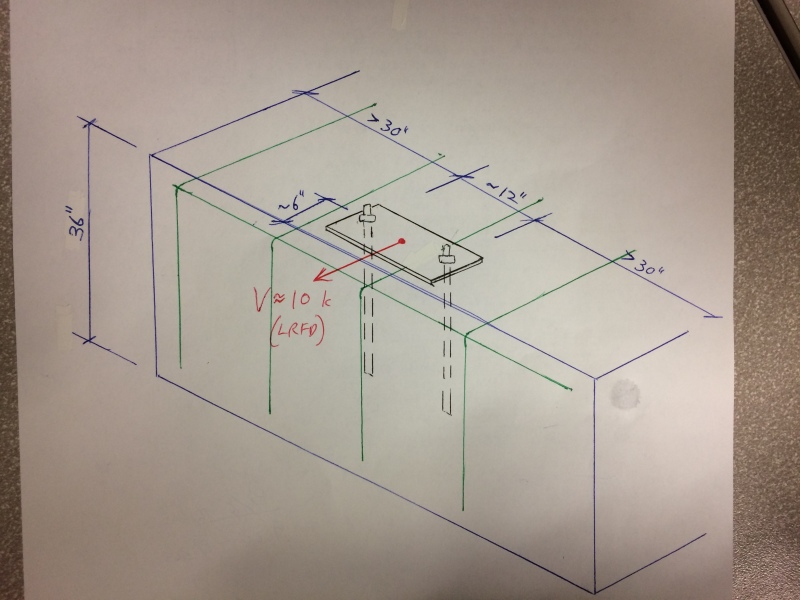Nor Cal SE
Structural
- Mar 7, 2017
- 84
I have a scenario of anchor bolts to existing concrete where I’m interested to get some feedback. Please see the attached PDF for reference.
The context is an equipment anchorage with two 1”-dia bolts through the equipment’s preset holes at each of 4 locations, therefore 8 total anchor bolts but only 1 of 4 locations shown for clarity. There is no tension load; shear load is ~ 10 kips as shown. My small edge-distance has no flexibility due to the equipment placement requirements, and the result is that I cannot get a Hilti Profis output with adequate capacity; increasing the bolt embedment provides diminishing returns because of the edge distance.
I’m interested to know whether anyone has past examples where you used a non-Ch-17 alternate method to mitigate the shear loads. The green lines in my sketch are reinforcing bars a couple inches from each concrete face, and the hoops are spaced 12” oc. Would it be possible to use the ACI 318 shear friction equation, assuming the anchor bolts can act like reinforcing dowels, lapped with the existing hoop bars?

The context is an equipment anchorage with two 1”-dia bolts through the equipment’s preset holes at each of 4 locations, therefore 8 total anchor bolts but only 1 of 4 locations shown for clarity. There is no tension load; shear load is ~ 10 kips as shown. My small edge-distance has no flexibility due to the equipment placement requirements, and the result is that I cannot get a Hilti Profis output with adequate capacity; increasing the bolt embedment provides diminishing returns because of the edge distance.
I’m interested to know whether anyone has past examples where you used a non-Ch-17 alternate method to mitigate the shear loads. The green lines in my sketch are reinforcing bars a couple inches from each concrete face, and the hoops are spaced 12” oc. Would it be possible to use the ACI 318 shear friction equation, assuming the anchor bolts can act like reinforcing dowels, lapped with the existing hoop bars?

